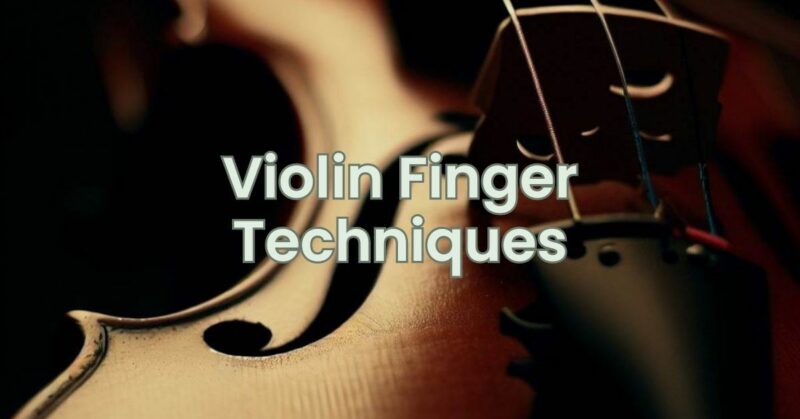The violin is a versatile and expressive instrument that relies heavily on precise finger techniques. Developing a strong foundation in finger placement, intonation, and agility is essential for violinists of all levels. In this comprehensive guide, we will explore key violin finger techniques that will help you improve your accuracy, control, and musicality on the instrument.
- Proper Finger Placement: a. Placement on the Fingerboard: Practice placing your fingers on the fingerboard with precision and consistency. Each finger should be placed on the pad, just behind the fret, to produce a clear and resonant sound.
b. Finger Curvature: Maintain a natural curvature in your fingers, with a slight arch, to achieve proper finger placement and avoid touching adjacent strings unintentionally.
- Finger Independence: a. Finger Exercises: Practice exercises that focus on developing finger independence. Play scales, arpeggios, and chromatic patterns, paying attention to each finger’s movement and coordination. Gradually increase the speed and complexity of the exercises to challenge your finger dexterity.
b. Sliding Technique: Incorporate sliding or shifting between notes to improve finger agility. Practice sliding smoothly and accurately between adjacent notes, using the same finger or different fingers, to develop flexibility and control.
- Vibrato Technique: a. Finger Rocking Motion: Vibrato is a technique that adds warmth, expression, and depth to the sound. Develop a controlled finger rocking motion, where the finger moves back and forth while maintaining contact with the string. Start with slow and controlled vibrato, gradually increasing the speed and amplitude.
b. Finger Placement and Speed: Experiment with different finger placements and speeds to achieve a variety of vibrato effects. A higher finger placement and slower speed produce a wider and more expressive vibrato, while a lower finger placement and faster speed create a narrower and more intense vibrato.
- Finger Pressure and Intonation: a. Finger Pressure: Apply consistent and appropriate finger pressure to the string to produce a clear and resonant sound. Avoid excessive pressure that can cause tension and a sharp or flat pitch. Practice playing long, sustained notes while monitoring your finger pressure and intonation.
b. Intonation Exercises: Develop your intonation skills by practicing scales, arpeggios, and intervals. Use a tuner or play along with a reference pitch to ensure accuracy. Train your ears to recognize and correct any intonation issues.
- Finger Articulation: a. Staccato: Practice playing staccato notes, focusing on precise finger articulation and clean separation between the notes. Lift your finger off the string immediately after playing each note to achieve a crisp and distinct sound.
b. Legato: Develop smooth and connected finger transitions for legato playing. Maintain a continuous and even sound as you shift your fingers between notes. Practice slow and controlled finger movements to achieve seamless legato passages.
Mastering violin finger techniques is a crucial aspect of becoming a proficient and expressive violinist. By focusing on proper finger placement, developing finger independence, refining your vibrato technique, paying attention to finger pressure and intonation, and practicing finger articulation, you can enhance your precision, control, and musicality on the instrument. Consistent practice, guidance from a qualified teacher, and attentive listening to accomplished violinists will help you refine your finger techniques and unlock the full potential of your violin playing.


